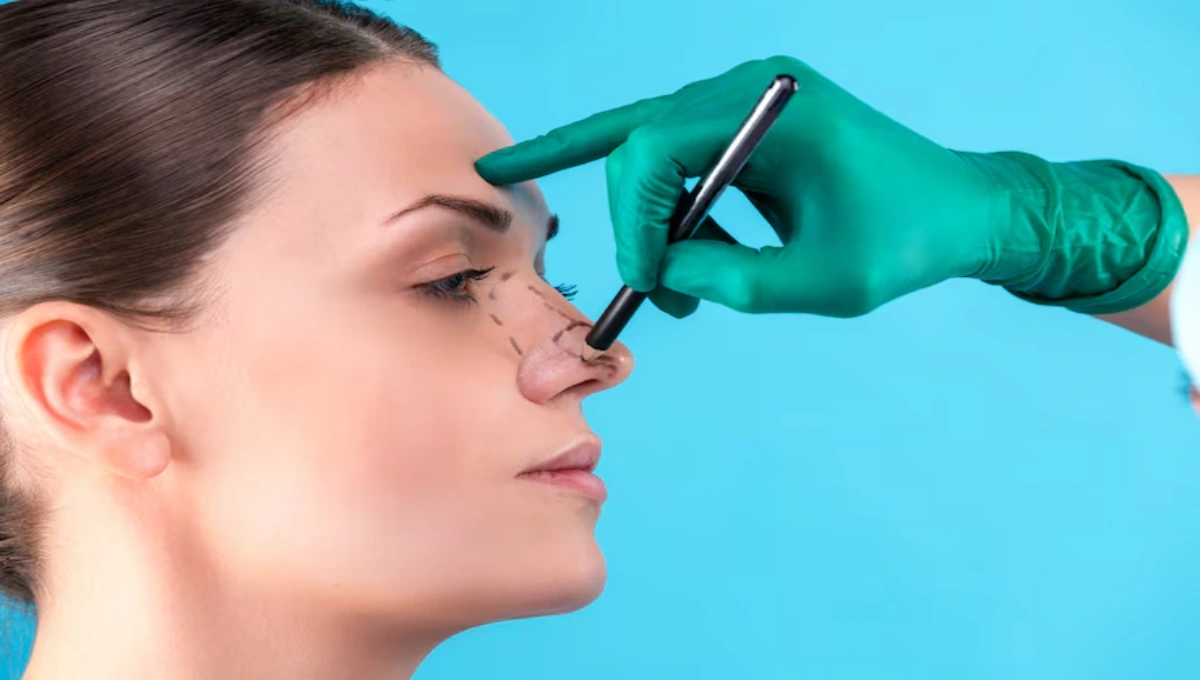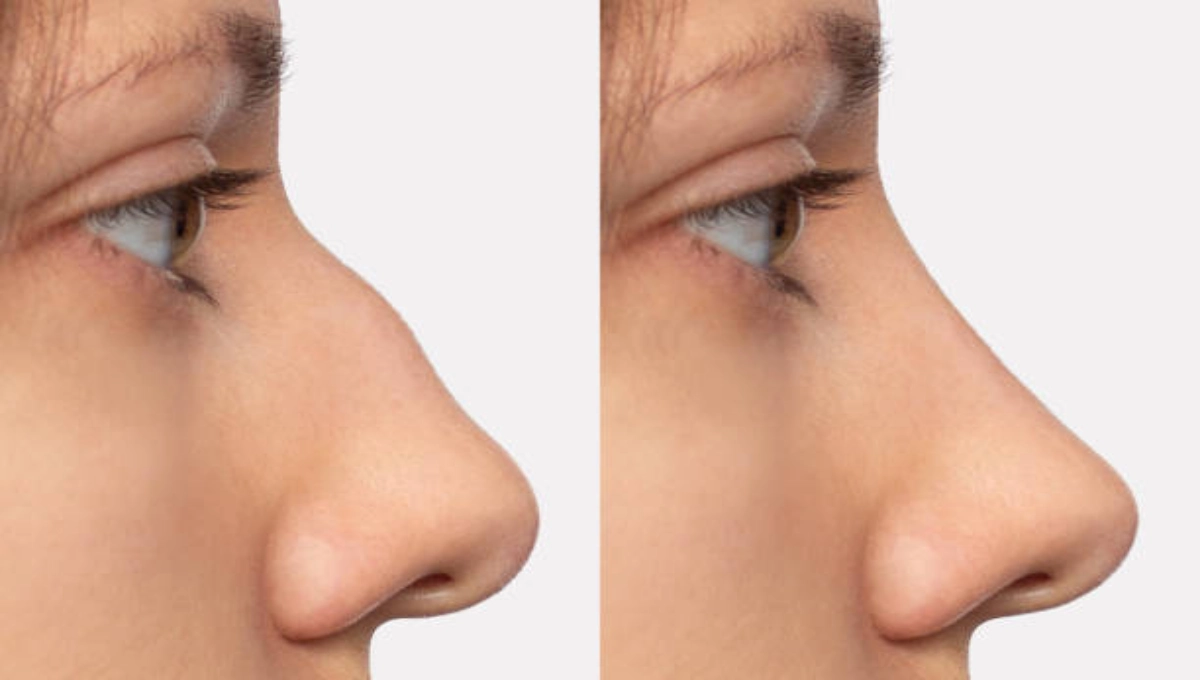Rhinoplasty is a popular cosmetic procedure that can significantly enhance facial appearance and function, especially when addressing breathing issues. For many patients, it leads to improved confidence and better nasal aesthetics. However, not all rhinoplasty surgeries deliver the expected results. In some cases, additional surgery may be required to refine or correct the initial outcome. This is where revision rhinoplasty, also known as secondary rhinoplasty or corrective rhinoplasty, comes into play.
Revision rhinoplasty is a more complex procedure designed to address unsatisfactory results from a previous nasal surgery. Whether the concerns are aesthetic or related to functional issues like breathing difficulties, secondary rhinoplasty can help patients achieve the nose they’ve always desired. In this article, we will explore the reasons for revision rhinoplasty, the procedure itself, and how additional surgery can lead to the best possible outcome.
What Is Revision Rhinoplasty?
Revision rhinoplasty refers to any subsequent surgery performed after an initial rhinoplasty procedure. The goal of revision surgery is to correct or improve the results of the first surgery, whether the issues are aesthetic or functional. Unlike the first rhinoplasty, which is often a straightforward procedure aimed at reshaping the nose, revision rhinoplasty is more challenging due to the altered tissue and structural changes from the previous surgery.
The need for revision rhinoplasty may arise from a variety of factors, including aesthetic dissatisfaction, functional complications, or both. While the primary purpose of rhinoplasty is often cosmetic, functional concerns such as breathing difficulties due to structural issues within the nose are also common reasons why patients seek corrective surgery. If your previous rhinoplasty did not fully address these issues, revision rhinoplasty may be necessary to provide relief.
Common Reasons for Revision Rhinoplasty
There are several reasons why patients may opt for revision rhinoplasty. Understanding these reasons can help patients make informed decisions about their secondary surgery. Common causes for revision rhinoplasty include:
1. Aesthetic Dissatisfaction
The most common reason for seeking revision rhinoplasty is dissatisfaction with the aesthetic results of the initial surgery. While many patients are thrilled with the results of their first rhinoplasty, others may feel that the shape or size of their nose is not what they expected. Issues such as over-reduction or under-reduction of the nasal structure, an unnatural appearance, or asymmetry can prompt patients to seek corrective rhinoplasty.
For instance, if the nose appears too small or too large in proportion to the face, or if there are visible lumps or bumps that were not addressed during the first surgery, patients may want to undergo revision surgery to achieve a more balanced and harmonious look.
2. Functional Problems
In some cases, a previous rhinoplasty may have caused or exacerbated breathing problems. This could be due to a variety of factors, including a collapsed nasal valve, an over-reduced nasal structure, or an improperly corrected septum. Functional rhinoplasty procedures aim to restore or enhance nasal airflow, addressing breathing difficulties caused by the previous surgery.
If you experience chronic nasal congestion, difficulty breathing, or sleep apnoea following rhinoplasty, you may require revision surgery to correct these functional issues and restore normal airflow. In some cases, revision rhinoplasty can address both aesthetic and functional concerns simultaneously.
3. Scar Tissue and Internal Damage
Scar tissue is a common issue following rhinoplasty surgery. While scarring is typically hidden inside the nostrils, the formation of excessive scar tissue or internal damage to the nasal structure can interfere with the aesthetic and functional results of the surgery. Scar tissue can lead to nasal obstruction, asymmetry, or other complications that require corrective surgery to resolve.
In cases where scar tissue has formed due to the initial rhinoplasty, revision surgery may be necessary to remove or reposition the tissue and restore the appearance and function of the nose.
4. Poor Healing and Complications
As with any surgical procedure, rhinoplasty carries some risks of complications. Some patients may experience poor healing or other unexpected issues following their first surgery. This could include infection, excessive swelling, or the formation of scar tissue, which can distort the results of the surgery. In some cases, the nose may not heal properly, requiring further surgical intervention to correct the problem.
Complications that arise after the first rhinoplasty surgery may lead to the need for revision rhinoplasty to address issues such as nasal deformities or airway obstructions.
The Revision Rhinoplasty Procedure
Revision rhinoplasty is a more complex procedure than primary rhinoplasty due to the altered nasal structures from previous surgery. The process involves reshaping the nose to improve both its appearance and functionality, using techniques that address the unique challenges posed by scar tissue, altered cartilage, and other changes resulting from the initial surgery.
Consultation and Pre-Operative Planning
Before performing revision rhinoplasty, a thorough consultation is essential to evaluate the patient’s concerns and expectations. The surgeon will assess the results of the previous surgery and determine the best course of action for achieving the desired outcome. During this consultation, the surgeon may use imaging or other technologies to map out a detailed surgical plan, ensuring that the revision procedure is tailored to the patient’s unique anatomy.
It’s important to understand that revision rhinoplasty may involve more than just reshaping the external nose. In some cases, cartilage grafts from the patient’s own body (often from the ear or rib) may be required to reconstruct or support the nasal structure. These grafts help provide additional support and ensure that the nose maintains its shape and function.
The Surgery
Revision rhinoplasty is typically performed under general anesthesia, although some cases may require local anesthesia with sedation. The procedure involves making incisions inside the nostrils or, in some cases, a small external incision (open rhinoplasty) to access the nasal structures. The surgeon will then address any functional issues, such as a deviated septum or nasal valve collapse, and reshape the nose to improve its appearance.
During the surgery, the surgeon may remove or reposition cartilage, bone, or tissue to correct the structural issues. If necessary, additional cartilage grafts are placed to support the nasal framework and prevent further collapse or deformity.
Since revision rhinoplasty is more complex than primary rhinoplasty, the recovery process can be longer. Patients should expect swelling, bruising, and discomfort, although these side effects will subside over time. It’s crucial to follow the post-operative care instructions provided by the surgeon to ensure optimal healing and results.
The Benefits of Revision Rhinoplasty
While revision rhinoplasty is more complicated than primary rhinoplasty, it can offer significant benefits for those seeking a better outcome after a previous surgery. Some of the key benefits include:
1. Improved Aesthetic Outcome
The most obvious benefit of revision rhinoplasty is the potential to improve the appearance of the nose. If your initial rhinoplasty didn’t achieve the desired result, revision surgery can help reshape the nose to meet your aesthetic goals. Whether it’s correcting asymmetry, refining the nasal tip, or adjusting the size of the nose, revision rhinoplasty can provide more satisfying results.
2. Enhanced Functionality and Breathing
Revision rhinoplasty can also address functional issues, such as breathing difficulties, that may have resulted from the first surgery. By correcting structural problems like a deviated septum, nasal valve collapse, or other obstructions, patients can experience improved airflow and better overall nasal function.
3. Restored Confidence
For many patients, achieving the desired results from revision rhinoplasty can help restore self-esteem and confidence. A successful revision procedure can provide both physical and emotional benefits, improving the patient’s quality of life and allowing them to feel more comfortable with their appearance.
Conclusion
Revision rhinoplasty, or secondary rhinoplasty, is a procedure designed to correct unsatisfactory results from a previous rhinoplasty surgery. Whether it’s for aesthetic improvement or to address functional issues like breathing difficulties, revision rhinoplasty can provide the opportunity to achieve a more balanced and natural appearance. If you’re considering corrective rhinoplasty, it’s essential to consult with an experienced surgeon who can provide personalised care and realistic expectations.
Dr. Jerome Paris, a renowned facial plastic surgeon in Dubai, specialises in revision rhinoplasty and offers world-class care for patients seeking to improve both the appearance and function of their nose. If you’re considering revision rhinoplasty, contact Dr. Jerome Paris at +971 58 588 4587 or visit our clinic in Dubai to schedule a consultation. Take the first step towards achieving the results you deserve!





